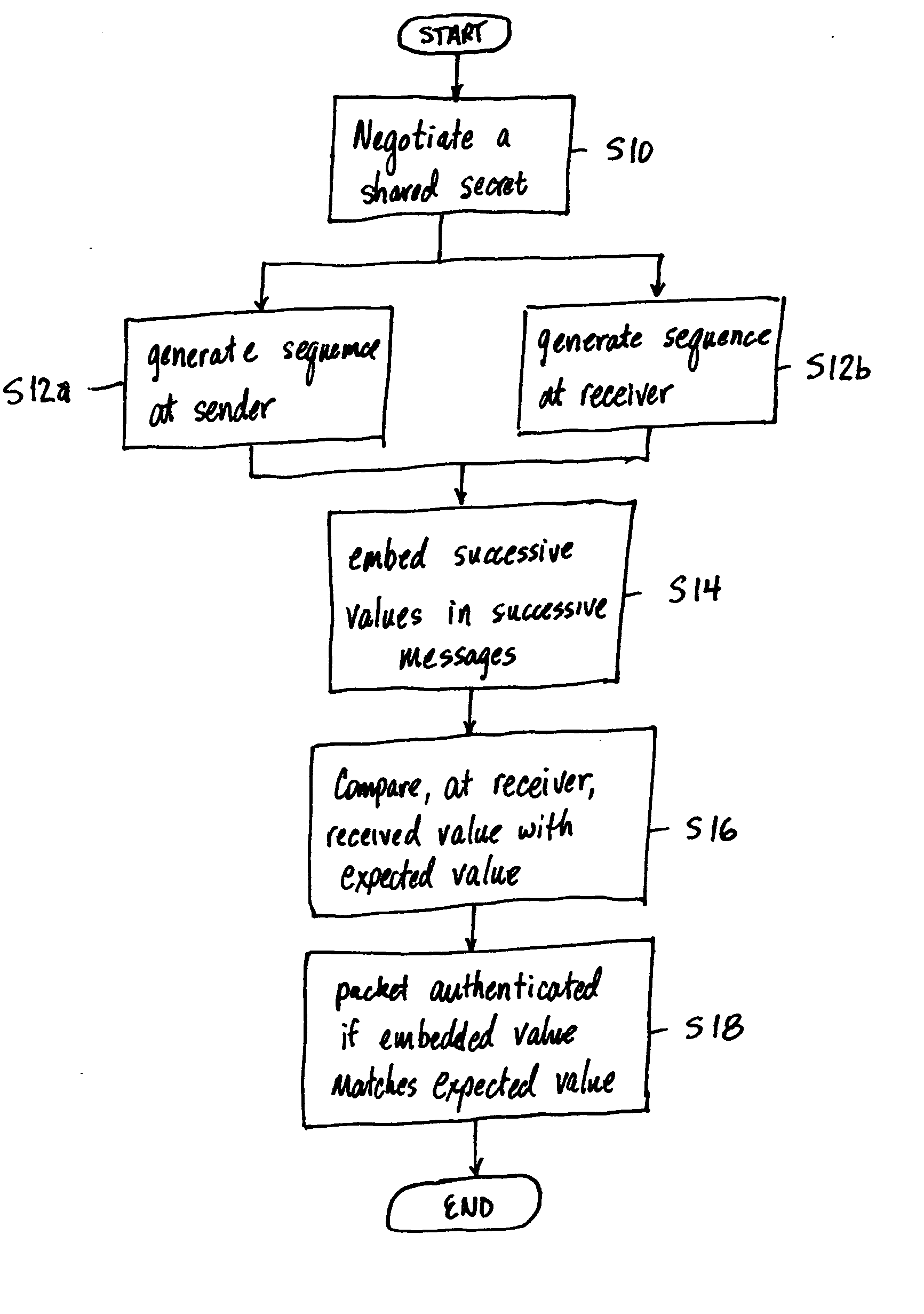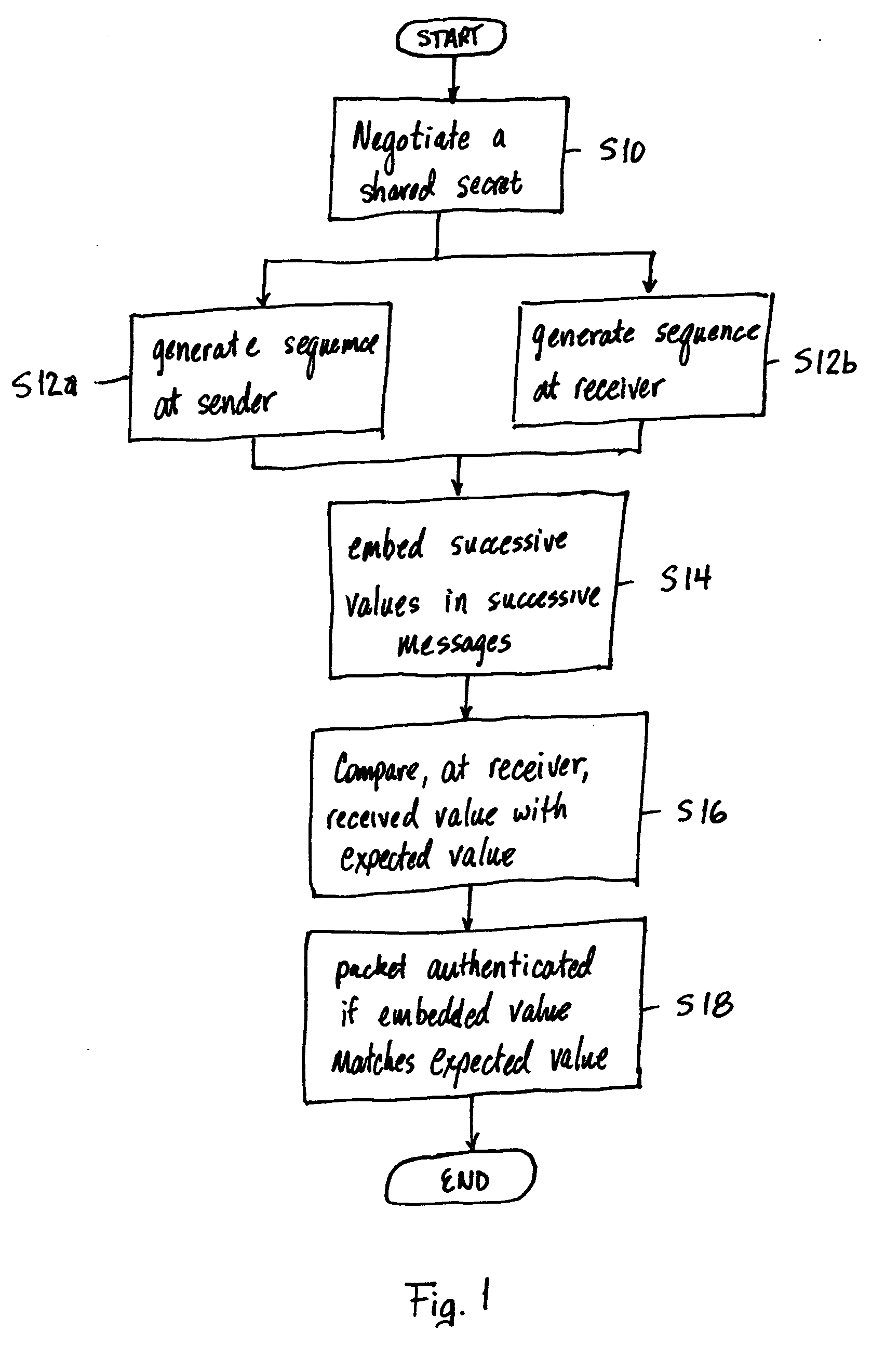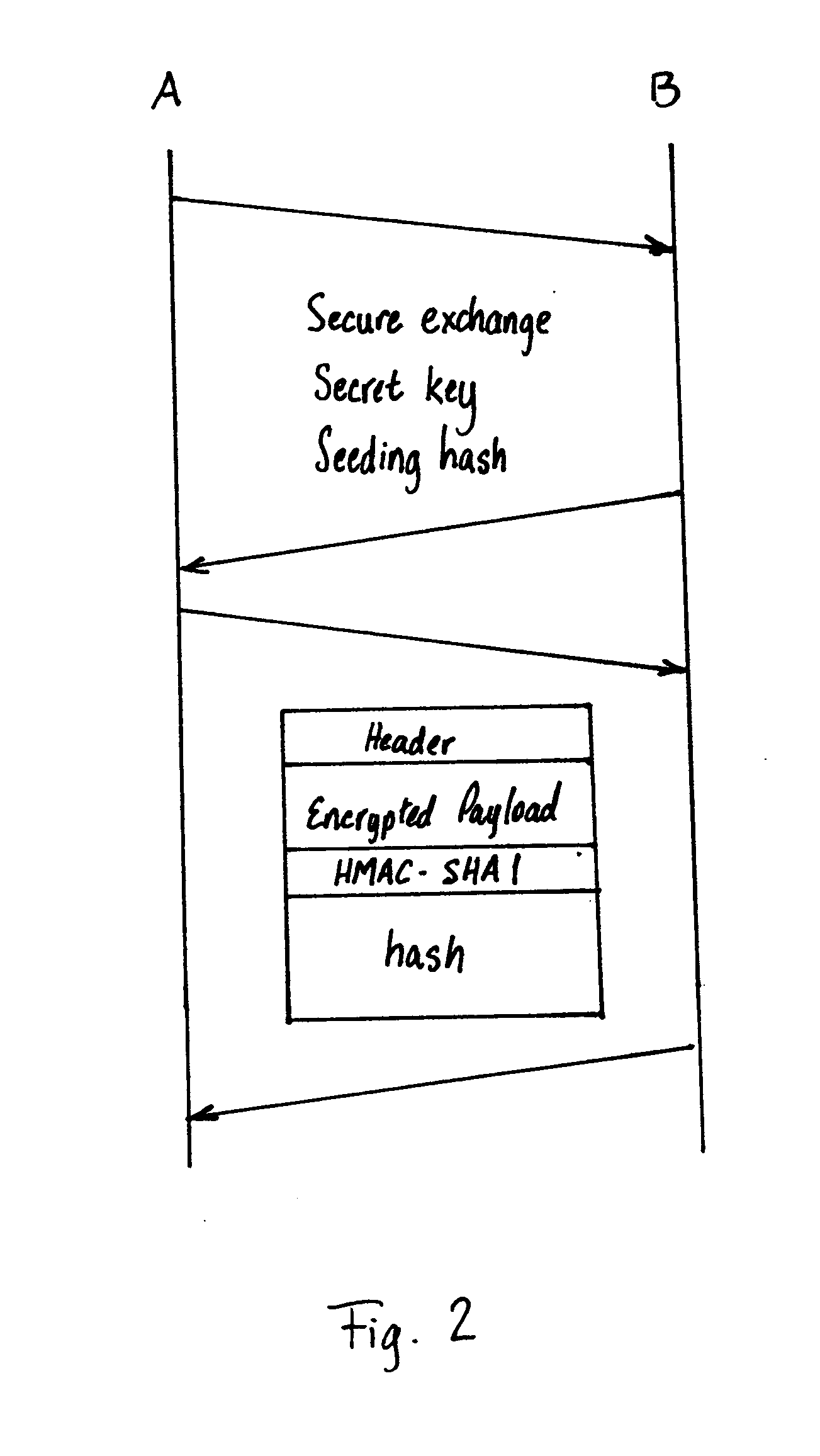Comparison based authentication in RTP
a technology of comparability and authentication, applied in the field of authentication mechanism, can solve the problems of degraded audio quality, degraded functioning of voip devices, and dns attacks against them, and achieve the effect of preventing replay attacks
- Summary
- Abstract
- Description
- Claims
- Application Information
AI Technical Summary
Benefits of technology
Problems solved by technology
Method used
Image
Examples
Embodiment Construction
[0030] The present invention relates to a method for communicating an RTP media stream between two network endpoints, i.e., a sender and a receiver. FIG. 10 is a simplified network showing various types of endpoints that may be connected to an IP Network 100 such as, for example, the Internet. The various endpoints include personal computers PC1, PC2, . . . PCn, IP Phones IPP1, IPP2, . . . IPPn, and phones P1, P2, . . . Pn. The personal computers PC1, PC2, . . . PCn, IP Phones IPP1, IPP2, . . . IPPn are directly connected to the IP network 100 by a service provider. The phones P1, P2, . . . Pn are connected to a Public Switched Telephone Network (PSTN) which is connected to the IP Network 100 by a gateway 102. The method described below can be performed on an RTP media stream between any two of the endpoints shown in FIG. 10 such as, for example, Voice over Internet Protocol (VoIP) streams. The communication between the two endpoints may be a full duplex. However, only one direction...
PUM
 Login to View More
Login to View More Abstract
Description
Claims
Application Information
 Login to View More
Login to View More - R&D
- Intellectual Property
- Life Sciences
- Materials
- Tech Scout
- Unparalleled Data Quality
- Higher Quality Content
- 60% Fewer Hallucinations
Browse by: Latest US Patents, China's latest patents, Technical Efficacy Thesaurus, Application Domain, Technology Topic, Popular Technical Reports.
© 2025 PatSnap. All rights reserved.Legal|Privacy policy|Modern Slavery Act Transparency Statement|Sitemap|About US| Contact US: help@patsnap.com



